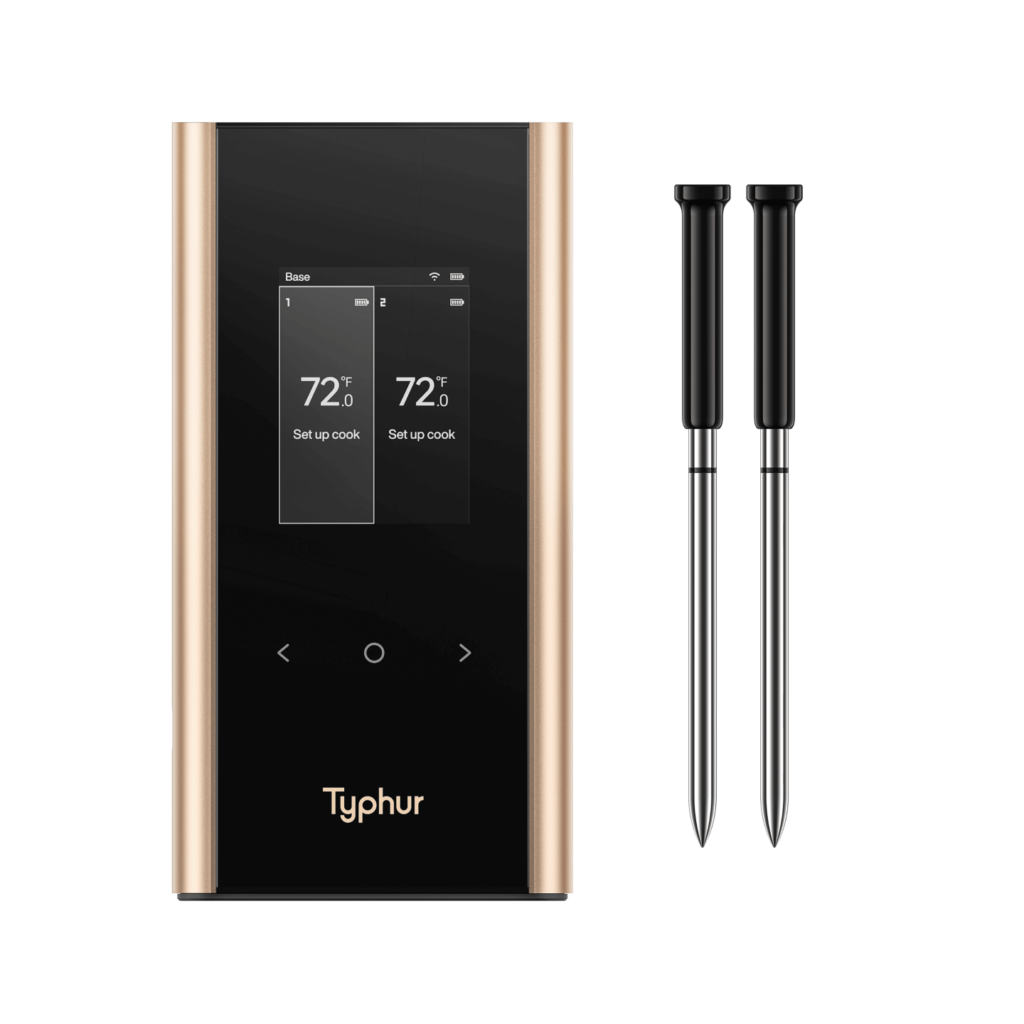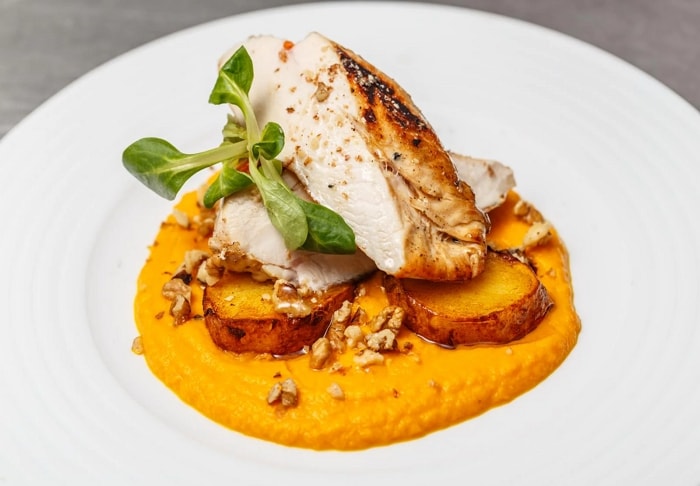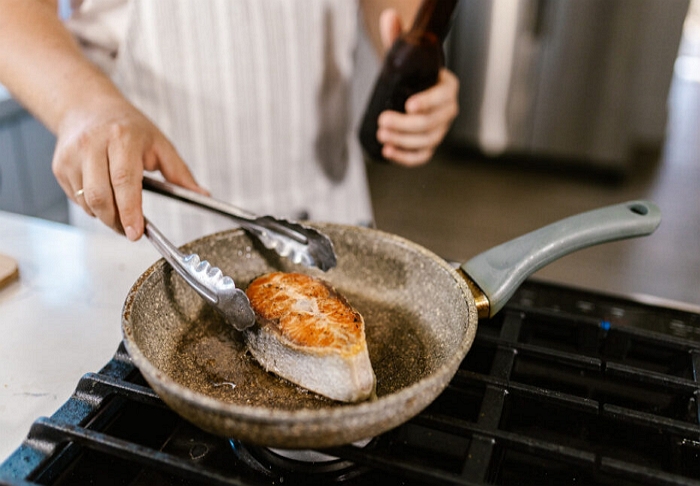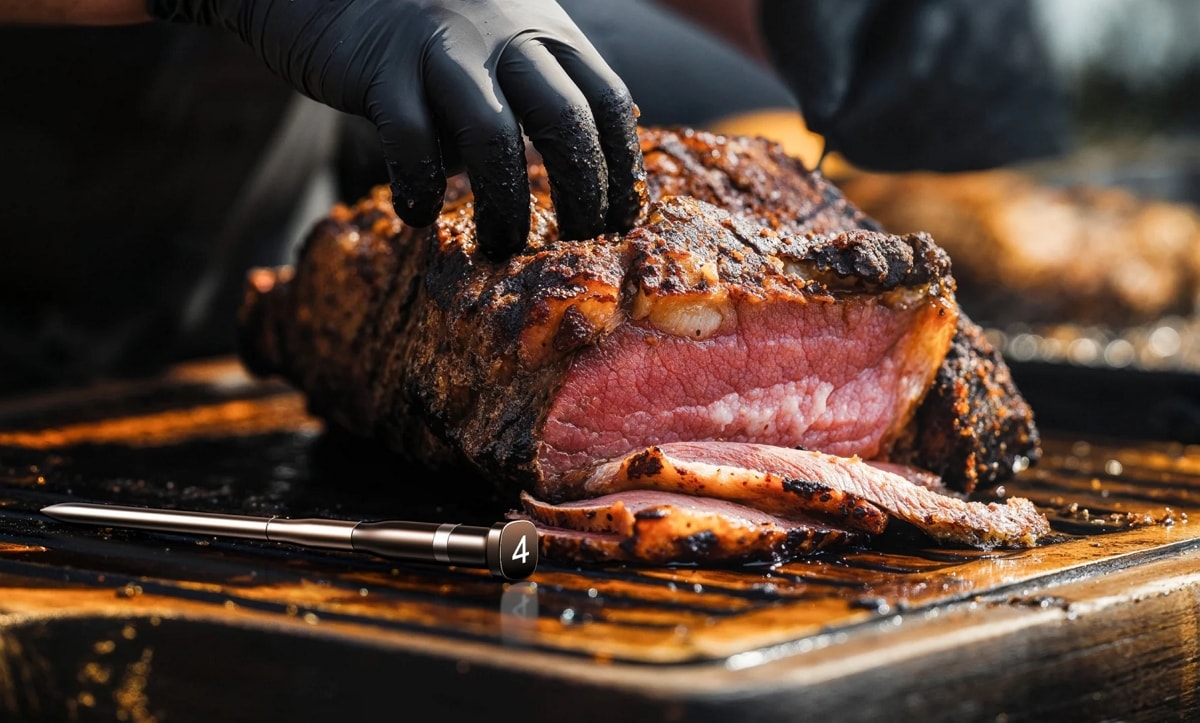Have you ever cut open a chicken breast to find the meat still pink in the middle, while you were sure that it had been cooking for long enough? Or maybe you were not so lucky and overcooked it, ending with a dry, tough piece of meat. It’s a common dilemma when cooking chicken, and knowing the exact way to tell chicken done would be the difference between a juicy, flavourful meal and a disappointing one.

So, we will discuss everything that goes into cooking chicken, from the time required for whole chickens to visual and tactile cues, once and for all.
Table of contents
Understanding Whole Chicken Cooking Time
In the case of cooking a whole chicken, the time differs from one thing to another. Weight stands as the most important factor to consider. Hence, a worthy rule of thumb is to cook your chicken for 20 minutes a pound at 350°F (175°C). Keep in mind that this is only a rough estimate, and you should always monitor the internal temperature closely.
Here’s a quick guide for estimating cooking times based on weight:
- 3 to 4 lbs: 1.5 to 2 hours
- 4 to 5 lbs: 2 to 2.5 hours
- 5 to 7 lbs: 2.5 to 3 hours
- Smaller cuts such as chicken breasts or thighs cook faster, typically in 20–30 minutes, depending on their thickness.
While these times are helpful, they’re just guidelines. The actual cooking time can be influenced by various factors such as oven temperature, cooking method, and preparation of chicken. For example, a stuffed chicken will require a longer cooking time than one without pastry. Similarly, a trussed or tied chicken might need a little extra time as well.

Always remember that cooking time isn’t enough. If there were an absolute rule on minutes, chicken meat would be either raw or dry from overcooking. That’s why knowing how to tell if chicken is done requires more than a timer. We need to check internal temperature and visual cues.
4 Ways to Tell If Chicken Is Done
Here are 4 reliable methods to know when chicken is perfectly cooked.
1. Use a Meat Thermometer (Most Reliable Way)
The most reliable and accurate way to determine if your chicken is cooked to perfection is by using an accurate meat thermometer. One of the best tools for this job is the Typhur Sync Gold Dual Wireless Meat Thermometer. This advanced thermometer is equipped with dual probes, which means that it can track the temperature of two pieces of meat simultaneously, a perfect setup when you either have different cuts of chicken or multiple pieces.

Long Range Wireless Meat Thermometer
The Typhur Sync Gold Dual uses wireless technology to connect to the application on your phone, so you can monitor the chicken’s internal temperature in real time from any spot in the kitchen. The ±0.5°F accuracy of this thermometer enables you to cook chicken that is both safe and perfectly done.
Here is how to use it:
Step 1: Prepare the Meat
Before cooking, insert the probe of the Typhur Sync Gold Dual into the thickest part of the chicken. Ensure that the probe is not touching bone or fat, as that could give you false readings.
Step 2: Connect the Thermometer
After syncing the thermometer with the Typhur app on your phone, you will be able to track temperature remotely. No need to hover over your chicken or open the oven door, which might interfere with cooking.

Step 3: Set Your Target Temperature
Choose the target chicken temperature. For safety and optimal doneness, your chicken should get to 165°F (74°C); the app can be set to alert you when the chicken reaches your preset internal temperature.
Step 4: Monitor the Temperature
While the chicken is cooking, you may follow the changes in its internal temperature in real time with this app; once the thermometer reads 165°F, your chicken is ready to be taken off the heat.

Step 5: Rest the Meat
Let the chicken rest for 5-10 minutes once taken from the oven. During this resting period, the temperature will rise slightly, ensuring that it is fully cooked and retains maximum flavor from the juices.
The Typhur Wireless Meat Thermometer will ensure that your cooking is accurate, making you confident that your chicken is safe to eat and perfectly done every time.

2. Check the Juices (Classic Visual Test)
A traditional method for many home cooks is the juice test.
- Pierce the thickest part of the chicken with a knife or fork.
- Clear juices indicate the chicken is done; pink or red juices mean it’s undercooked.
The method is simple and works for big whole chickens or larger cuts of meat. However, it does not work for thin pieces like chicken tenders, where clear juices can come out before the meat is done. Also, every time you cut into the chicken, you lose some juices that tenderize the chicken.
3. Examine the Color and Texture (Visual & Touch Test)
Another way is how the meat looks and feels. When you try to figure out how to tell if chicken is undercooked, color and texture give you big clues in matters like:
- Raw or undercooked chicken: glossy, translucent, slightly rubbery
- Fully cooked chicken: opaque white throughout, firm yet springy
- Overcooked chicken: chalky white, very firm, and dry
Press it gently with your finger. Cooked chicken should feel springy and resistant to a certain extent, not squishy or jelly-like. This is an excellent technique to apply if you are learning how to tell if chicken is cooked just through sight and feel.
4. Learn the Finger Test (Best for Smaller Cuts of Meat)
The finger test is adapted from steak-cooking methods and works well for smaller chicken cuts such as breasts or thighs.
- Press the chicken with your finger: it should feel firm but yield slightly under pressure.
- Compare it to the fleshy area at the base of your thumb. If it feels softer, the meat is undercooked, and if it feels very hard, it’s cooked.
This method requires practice, but it works very well in a pinch if you’re wondering how to tell if chicken is cooked.
Why It’s Important to Cook Chicken Properly
Proper cooking is important for taste and safety:
- Food safety: Undercooked chicken can carry harmful bacteria like Salmonella or Campylobacter. Knowing how to tell if chicken is undercooked prevents foodborne illness.
- Texture and flavor: Overcooking dries out chicken. Proper cooking renders juicy and tender meat.
- Confidence in cooking: Understanding how to know chicken is done gives confidence in preparing and serving perfectly cooked meals.

Bonus Tips for Perfectly Cooked Chicken Every Time
A few extra tips can make a big difference. Following these tips ensures every piece is both safe and delicious:
- Rest your chicken: Let it rest 5–10 minutes after cooking. This allows juices to redistribute for maximum juiciness.
- Even thickness: Pound chicken breasts to even thickness so that they cook uniformly.
- Consider carryover cooking: Once off the heat, the chicken does continue to cook a little bit; therefore, if you measure it with a thermometer, remove it a few degrees before it reaches 165°F.
- Use multiple checks: Combine thermometer readings, juice color, and texture for final judgment.
FAQs About Chicken Doneness
Probably not. That small amount of undercooked chicken can harbor harmful bacteria. You are better off not eating it if you think it wasn’t cooked properly.
The meat may look shiny and pink inside; juices may run red, and the texture will feel rubbery and soft. If you are not sure, always check the internal temperature.
Food poisoning symptoms typically appear 6 to 48 hours after eating undercooked chicken. They entail abdominal cramps, diarrhea, nausea, and fever.
Summary
Knowing how to tell if chicken is done is a must if one is going to have safe yet tasty meals. Using a wireless meat thermometer would give you the most reliable answer; check juices, proceed to color and texture, and finally, test via finger for smaller cuts. This way, using all of these methods, you can be assured of making safe, juicy, and tender chicken.
Whether you’re asking how to know chicken is cooked, how do I know when chicken is done, or how to tell if chicken is done without a thermometer, following these 4 methods ensures consistently excellent results.




